an interview with Clive Patrickson, conducted by James Ives, MPsych
Why are complications associated with preterm births more difficult than with full term births? Why is it so difficult to train for these complications?
It's difficult to practice skills on preterm babies who are in neonatal intensive care units (NICU). The complications associated with preterm babies can be varied and infrequent, making it hard for staff to develop their skills set.
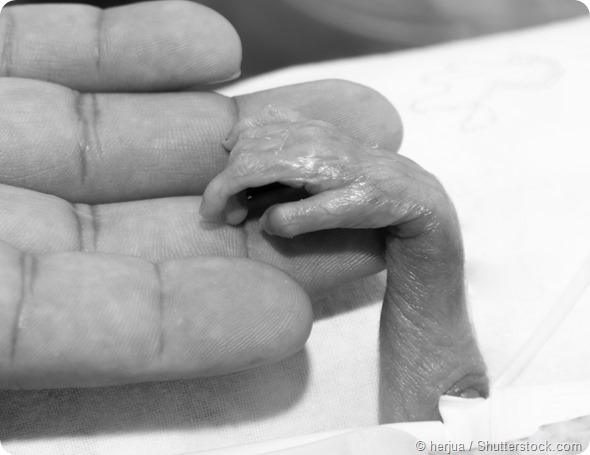
The first 10 minutes is critical for a preterm newborn. When complications arise, providers must be prepared to deliver quality care. To help train staff in NICUs, what is needed are good quality devices to simulate breathing and other complications that preterms may face in real life situations.
For example, from a totally different domain, people don't appreciate that paramedics may only see a cardiac arrest in a child once every twelve years. If you have events that are so rare then it’s extremely important for you to practice.
Laerdal is committed to helping save 500,000 more lives every year and from our discussions with neonatologists and neonatal nurses, we know that the survival rates of premature babies can be improved through better training.
It is only through practice in difficult situations that staff can become competent and more confident when it comes to treating a living and breathing preterm infant.
What can be done to improve training with preterm complications? How can simulation play a role in modern day training?
Laerdal have produced the Premature Anne, a 25 week preterm manikin developed in partnership with the American Academy of Pediatrics (AAP) is designed to facilitate the training of healthcare professionals in the initiation of proper care and resuscitation of preterm infants.
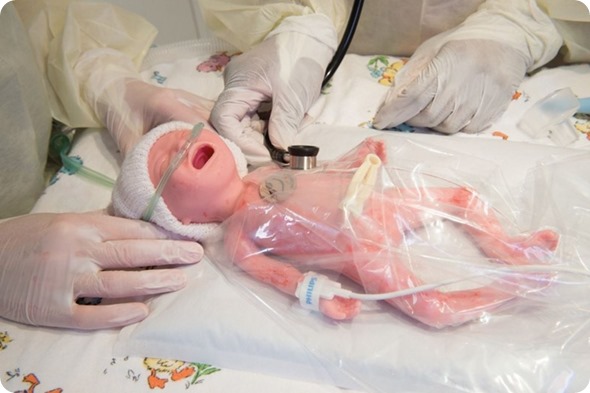
Premature Anne being used to train health care professionals. Kindly used with permission granted from Laerdal Medical Corporation.
The realistically proportioned 25 week preterm manikin is designed to train airway management including the placement of an ET tube.
Simulation training using Premature Anne allows NICU staff to practice their skills in complicated scenarios but in a safe environment without jeopardizing the life of a preterm baby.
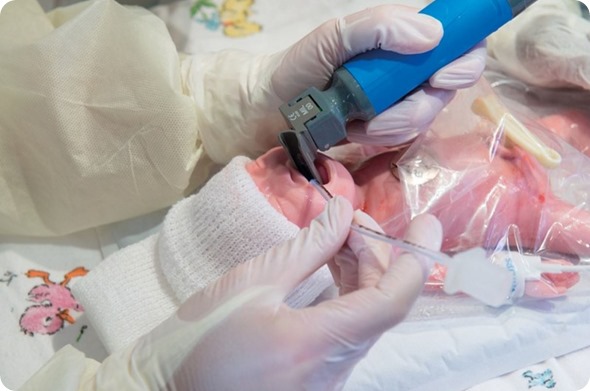
Premature Anne being used to train health care professionals in placing an endotracheal tube in a premature infant. Kindly used with permission granted from Laerdal Medical Corporation.
Every second is life and death for a preterm infant. When you've got a 26 week preterm baby, the skin is very different, the way in which the baby behaves is very different and all of the baby’s organs are not properly formed. Learning how to cope with those extremely fragile moments is very important.
Before simulation in neonatal procedures, how were midwives and neonatal healthcare professionals trained to cope with preterm birth situations and emergencies?
“See one, do one, teach one”, was the old way in which medicine was taught. In many cases, by observing other people dealing with events and then being allowed to practice on these rare events under supervision of others.
It's an extremely haphazard way of learning. You couldn't plan for it, there could be no curriculum, because the event happened whenever it occurred. Some people would practice often, and some people would never get the chance to practice.
Places that had low intensity births, very small numbers, may not see a rare event for years, so practicing for this ‘almost never’ event is extremely difficult. In high intensity units where healthcare professionals specialize in treating preterm infants, they are more experienced because they are exposed to infants with rare complications.
Of course the problem now is that prematurity is becoming surprisingly more relevant nowadays. It is estimated that every year worldwide, 15 million babies are born preterm (Chang, Larson et al, 2013).
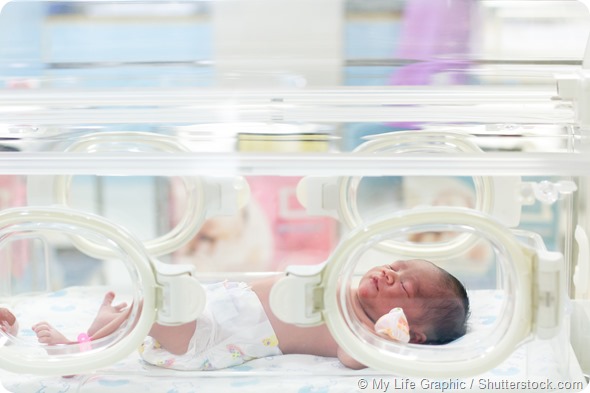
According to the UK charity Bliss, over 54,000 babies were born prematurely in England and Wales in 2011. With the numbers growing, appropriate training is becoming increasingly necessary and popular.
Can you give me a brief overview of the teaching changes that have occurred and how you hope they will change with Premature Anne?
There have been neonatal simulators for full term babies for some time. Laerdal’s SimBaby is one example. There have been courses for learning about neonatal deliveries and how to deal with a child that's suffering from or needing resuscitation after birth for some time.
What they've not been able to do, is be able to practice anything related to prematurity. Up until now the courses have really been passive, the students would watch videos to see how things are done, fielding questions, answering multiple choice questionnaires etc.
Then students practice on more or less full term simulators or full term mannequins, to learn the procedures but they never truly get the sense of what it's like to practice on something that's so small.
What makes the Premature Anne different when teaching healthcare professionals that work with preterm infants in the delivery room and NICU? Why do you think that this will make a difference?
We worked closely with neonatal resuscitation organizations around the world, in particular with the AAP. We did that because just releasing a manikin and hoping that it actually makes a difference would probably have little impact.
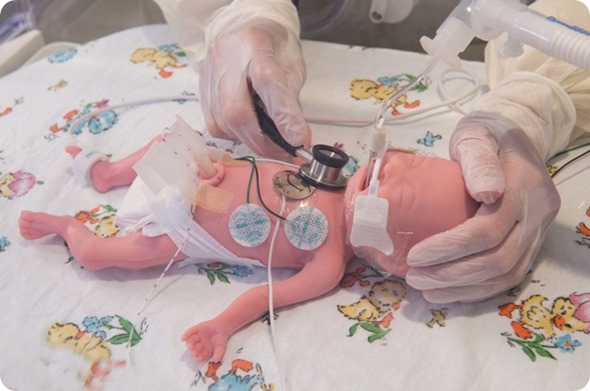
Premature Anne being used to train health care professionals in heart checks in a premature infant. Kindly used with permission granted from Laerdal Medical Corporation.
The simulator has to have curriculum with it and scenarios attached, so that people learn properly what they should do. It’s the same as having a car, if you don't know how to drive it you need to have lessons.
With Premature Anne, the idea is that it’s not just about the simulator, it's about the curriculum. It will be as popular as the organizations that need to teach these skills believe that it ought to be.
After three years of working with the organizations who want to improve training in this area, we have a very high degree of confidence that this new simulator will actually solve a real need. And that the curriculum will make a real difference.
What features does the Premature Anne simulate? How realistic is it?
Premature Anne allows people to intubate, listen for heart beats, provide ventilation so that you can see chest rise and give very small ventilations in very rapid succession.
It allows you to simulate just about everything that you need to do to enable you to resuscitate a premature baby, if the infant is not breathing.
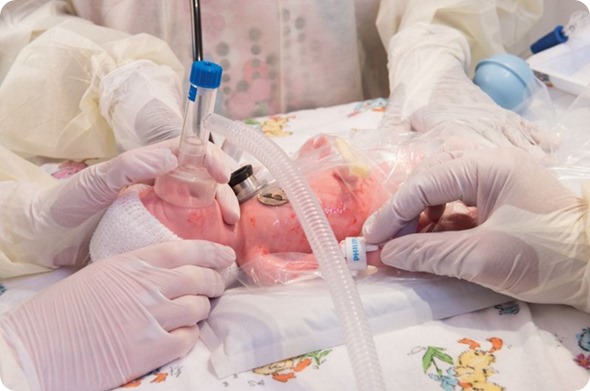
Premature Anne being used to train health care professionals in providing ventilation for a premature infant. Kindly used with permission granted from Laerdal Medical Corporation.
What does the future hold for preterm simulators such as Premature Anne?
We hope that this will meet the need for a prolonged period. We spent a concentrated period of time trying to understand what the physicians and educators really needed.
Laerdal’s focus is also to make sure that there is sufficient educational materials that support the use of the simulator.
I used the metaphor of a car, the educational materials are the petrol that goes inside the vehicle. The instructors are the people who are the drivers of the car. Our focus in 2016 will be on how we help healthcare professionals enhance their skills in treating premature babies.
We are confident our work with AAP on developing Premature Anne will meet our customers’ expectations and help save lives.
Where can readers find more information?
About Clive Patrickson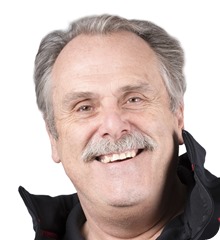
Clive Patrickson serves as the Chief Executive Officer of Laerdal Medical Corporation and Laerdal Medical AS.
Clive Patrickson served as the Vice President of Sales, Marketing & Services at Laerdal Medical Corporation and Laerdal Medical AS.